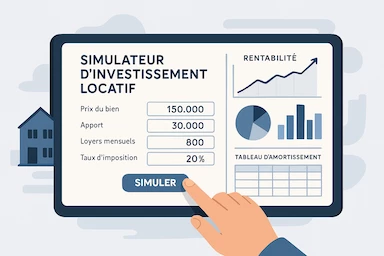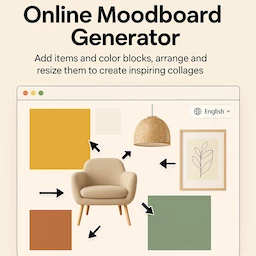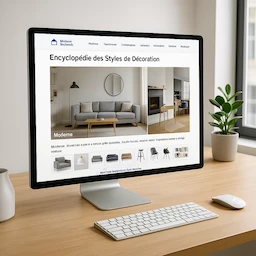Welcome to our online platform dedicated to practical and fast tools! If you are looking for solutions to optimize your investments, spark your creativity with inspiring moodboards, or enhance your decor knowledge through an interactive quiz, you've come to the right place. Our intuitive and accessible tools let you transform your ideas into reality with just a few clicks. Discover a modern and efficient interface designed to simplify your daily routine and meet all your creative and financial needs.
These online tools have been designed to meet a variety of needs by combining innovation with practicality. They include:
-
Investment feature
To manage and optimize your financial investments. Our rental investment simulator is an interactive tool designed to help you assess the profitability of your real estate investments. With its intuitive interface, simply input your financial, financing, rental, and tax parameters to receive a detailed analysis of your project. View the outcomes through dynamic charts and amortization tables, and discover the best strategies to optimize your property resale for maximum returns.
-
Mood board interface
To stimulate your creativity and visualize design inspirations. Our online moodboard generator is the perfect tool to create inspiring visual compositions. Easily add products and color blocks, arrange your ideas with drag-and-drop functionality, and resize each element for the perfect layout. With its intuitive design and multilingual features, this tool sparks creativity and simplifies the planning of visual projects, whether in design, fashion, or interior decoration.
-
Interactive decor quiz
To test and enhance your knowledge in decoration. This tool is an interactive and intuitive quiz designed to help you determine your decorating style by answering 14 simple questions. Each answer helps to identify your dominant style among 12 options (Scandinavian, Industrial, Vintage, Modern, Minimalist, Bohemian, Rustic, Art Deco, Contemporary, Classic, Tropical, Mediterranean). At the end of the quiz, you receive not only your personalized result but also tailored product recommendations from the Techneb catalog—all available in five languages.
-
Encyclopedia of Decorating Styles
Discover the world of interior design with our Interactive Encyclopedia of Decorating Styles, an innovative tool that combines modern design and intuitive functionality. Immerse yourself in 24 unique styles, from the elegance of modern to the warmth of rustic chic, and be inspired by exclusive product selections from the Maison Techneb boutique. Thanks to a dynamic and multilingual interface, easily explore each decorative universe, navigate between rich and detailed inspirations, and directly access the creations that will transform your interior into an exceptional space. Let yourself be seduced by this immersive experience which combines the art of design with the practicality of an interactive tool designed for decoration enthusiasts.
With an intuitive and user-friendly interface, these tools make it easier to make informed decisions and express your aesthetic sense.




